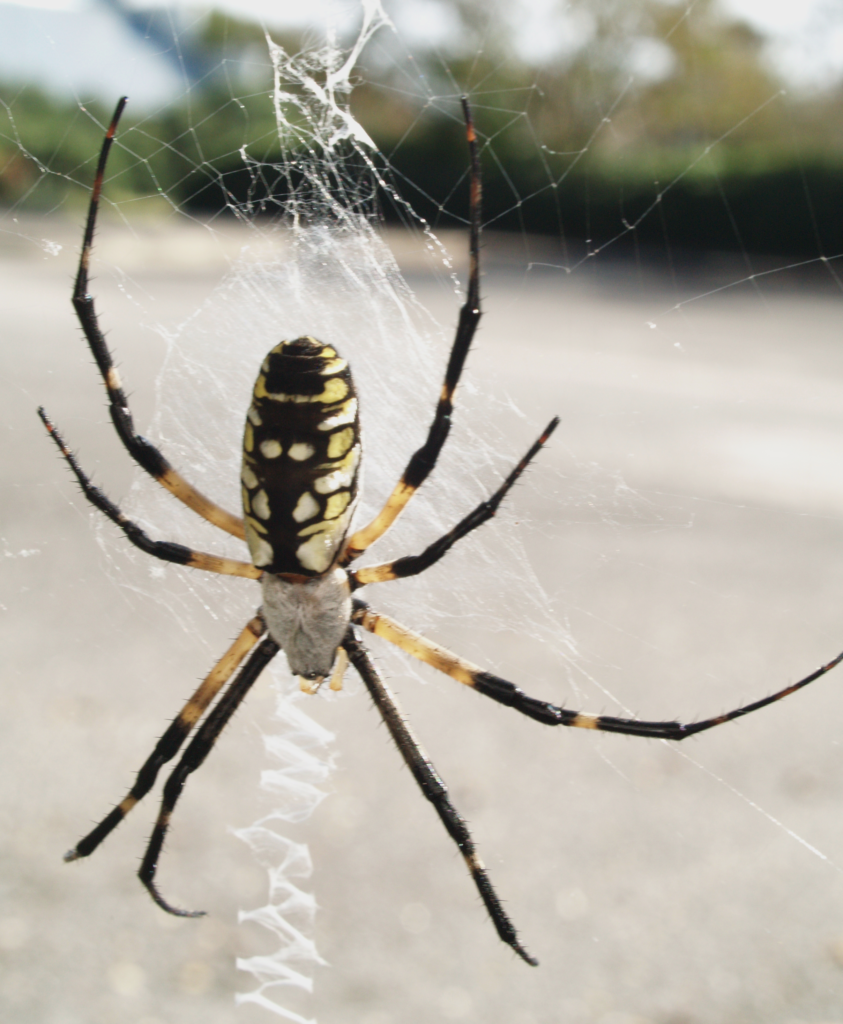So…last time, I spoke of weird scientific names, and told you that this time I would address common names.
Now, by common names, I mean those colloquial names we all use in our native tongues for organisms of all stripes. However, even in the same language, a particular species may have several different common monikers, often varying by geographic region.
E.g., I live in North Carolina, where the spider figured below is often called a “writing spider*”👇. However, it’s also called the “yellow garden spider,” “black-and-yellow argiope,” “black and yellow garden spider,” “Steeler spider,” “yellow garden orbweaver,” “black & yellow argiope,” “corn spider,” “banana spider,” “banded garden spider**👇,” “zipper spider,” “McKinley spider” and–in California, I’m told–the “golden orbweaver”—and that’s just English!

Well, then, what should we call it? I call it “Argiope aurantia,” and I suspect (and hope) that my family knows what I’m talking about…but my neighbors sure don’t.
So what is to be done? The simplest and most accurate solution is to avoid colloquial names altogether, and use only the scientific name: After all, that’s precisely why they exist, and it is no coïncidence that they’re the exact same in all languages and all countries.
Alas, that’s not going to happen.
But at least for scientific publication, the scientific name is mandatory. Except, after once identifying a well known species by its scientific name, an author can use a common name approved by the publishing organization. In this way, I could write about the “yellow garden spider, Argiope aurantia Lucas, 1833,” and from that point on merely call it the yellow garden spider.

In order for this to be consistent, though, the organization must maintain a list of “approved common names.” You may have guessed from my usage that among all those common names for Argiope aurantia, the only one acceptable in a scientific publication of the American Arachnological Society–and therefore the only one I would use in casual conversation–is “yellow garden spider.”
At this writing, that spider list recognizes common names for only 220 spiders (of over 50,000 described species), 131 mites, 48 scorpions, 3 harvestmen, 2 pseudoscorpions, and 1 vinegaroon.
The Entomological Society of America maintains its own list, 61 pages long (that’s about 2,400 species, but I’m not going to count them) of (mostly) insect common names approved for its publications (out of ca. 1 million described species).
These organizations take the recognition of common names quite seriously and have strict rules, not only for their acceptance, but for their syntax: E.g. “orbweaver” is one word (hyphens are eschewed), “leaffooted bug” takes no hyphen between the Fs, but “bug” is a separate word, as it is a “true bug”; a “sowbug” is not a bug (much less an insect) so it’s one word.
Furthermore, common names take no upper case, unless as the first word of a sentence or a proper noun: e.g. “American cockroach,” “Gertsch antmimic,” “McDaniel spider mite.”
This all matters. Well, maybe not to normal Homo sapiens, but to those of us nerds who really are concerned with knowing as closely as possible how any given critter is classified. Let’s face it: When telling your neighbor what’s climbing up his back, a “big ol’ red & black slimey, bitey-lookin’ thing” will still suffice.
*sigh*
*👆 The yellow garden spider (see what I did there?) is presumably called the “writing spider” ’round these parts because they spin a stabilimentum: i.e. a zigzag thickening of silk in the center of their their web, whereupon they rest. Local legend has it that if the spider writes your name in that zigzag, you’ll die that very night!
**👆 Unfortunately, banded garden spider is the accepted common name for a different species, viz. A. trifasciata (Forsskål,1775). This source of confusion highlights one of the problems with “unofficial” common names!

(This slightly cropped photo by John and Jane Balaban is used under
Creative Commons License)



